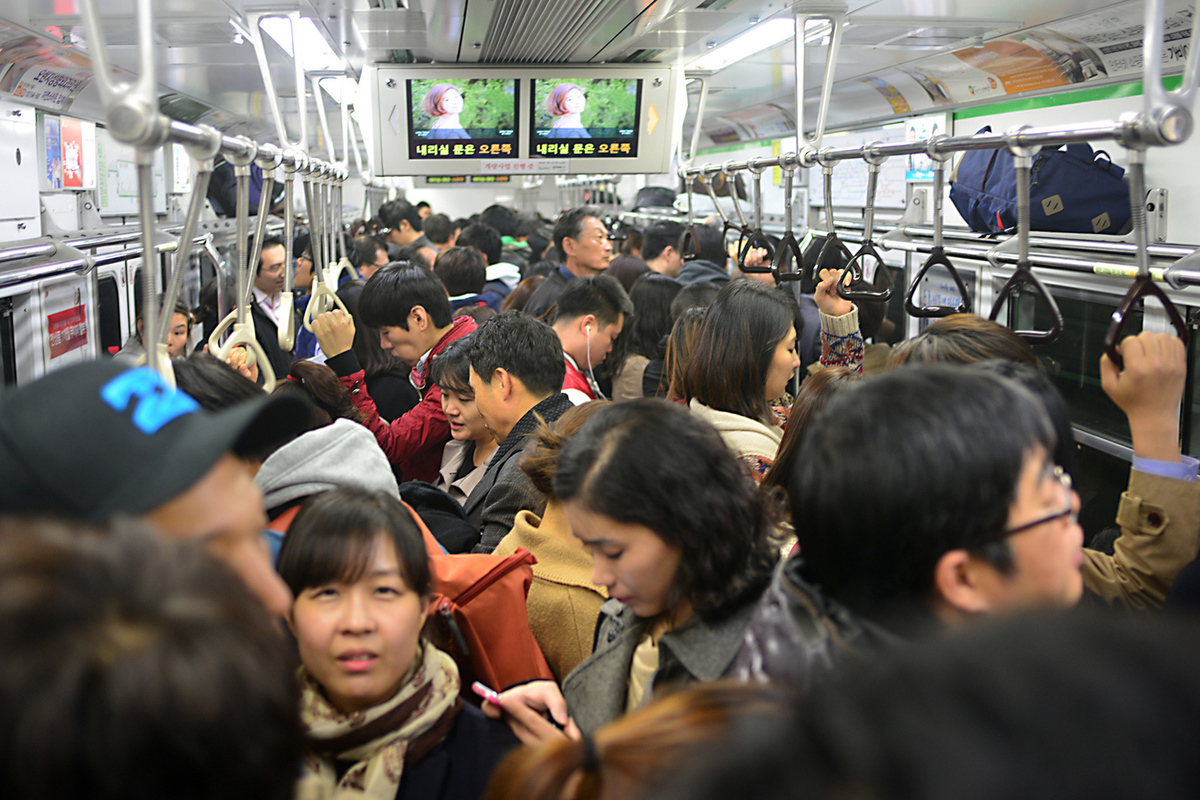In Seoul, he decided to completely change the format of the metro: the cars will get rid of unnecessary things
[ad_1]

South Korea is trying to reduce the flow of people during rush hours
South Korea is trialling subway cars without seats to reduce traffic jams during rush hour. From January, some carriages will be standing room only to help people use the South Korean capital’s subway lines “more comfortably and safely.”
There are plans to introduce trains with carriages without seats to Seoul to reduce overcrowding during the morning and evening rush hour, according to an official of one of the subway lines No. 1-8.
In January 2024, a trial program will include the removal of seats from two subway train cars running on two of the South Korean capital’s nine main lines. As part of the pilot project, this will be to create more space for passengers, officials said. The move is part of a broader effort to ease congestion on one of the world’s busiest subway systems.
“We are making various efforts to reduce congestion by increasing the number of subway trains operating during rush hour and providing security personnel to assist passengers during rush hour at major stations,” Seoul Subway CEO Baek Ho said on Nov. 1.
By the third quarter of 2023, congestion levels on Lines 4 and 7, where tests are taking place, reached 193.4 and 164.2 percent of capacity, respectively, during peak hours, according to Seoul Metro. With the introduction of standing carriages, peak congestion levels are expected to drop to 20-30 percent on both lines.
The congestion of lines 4 and 7 is explained by the fact that they have the most important transit connections. And trains with 6 cars cannot cope with the flow of passengers.
The Seoul Metro is considered one of the best transit systems in the world. It operates one of the world’s largest urban rail networks, with nine lines and 275 stations serving approximately 7 million passengers daily.
“If the pilot project is effective, we will expand the initiative in the future so that citizens can use the subway more comfortably and safely,” Baek Ho expressed hope.
In addition to this announcement, Seoul Metro has also increased the number of subway trains on two congested lines during peak hours as of October 30.
Several local media outlets have questioned whether the initiative will finally help end the dreaded “jiokcheol” – a term combining “hell” and “subway” that reflects the daily frustration experienced by commuters on crowded subway trains.
In the long term, Seoul Metro aims to expand seatless subway cars on two subway lines to fundamentally solve the problem of subway overcrowding.
The early South Korean government said it would develop an artificial intelligence-based congestion monitoring system to provide commuters with better information about crowd density at each subway station. According to Seoul Metro, the subway operator in Seoul, the new service will help analyze real-time passenger flow and crowd levels at subway stations, improving operational efficiency. Also in November 2022, trains on the most congested metro lines were lengthened to 6 cars and trains were added, which currently run on a regular weekday, from 37 to 40.
[ad_2]
Source link








